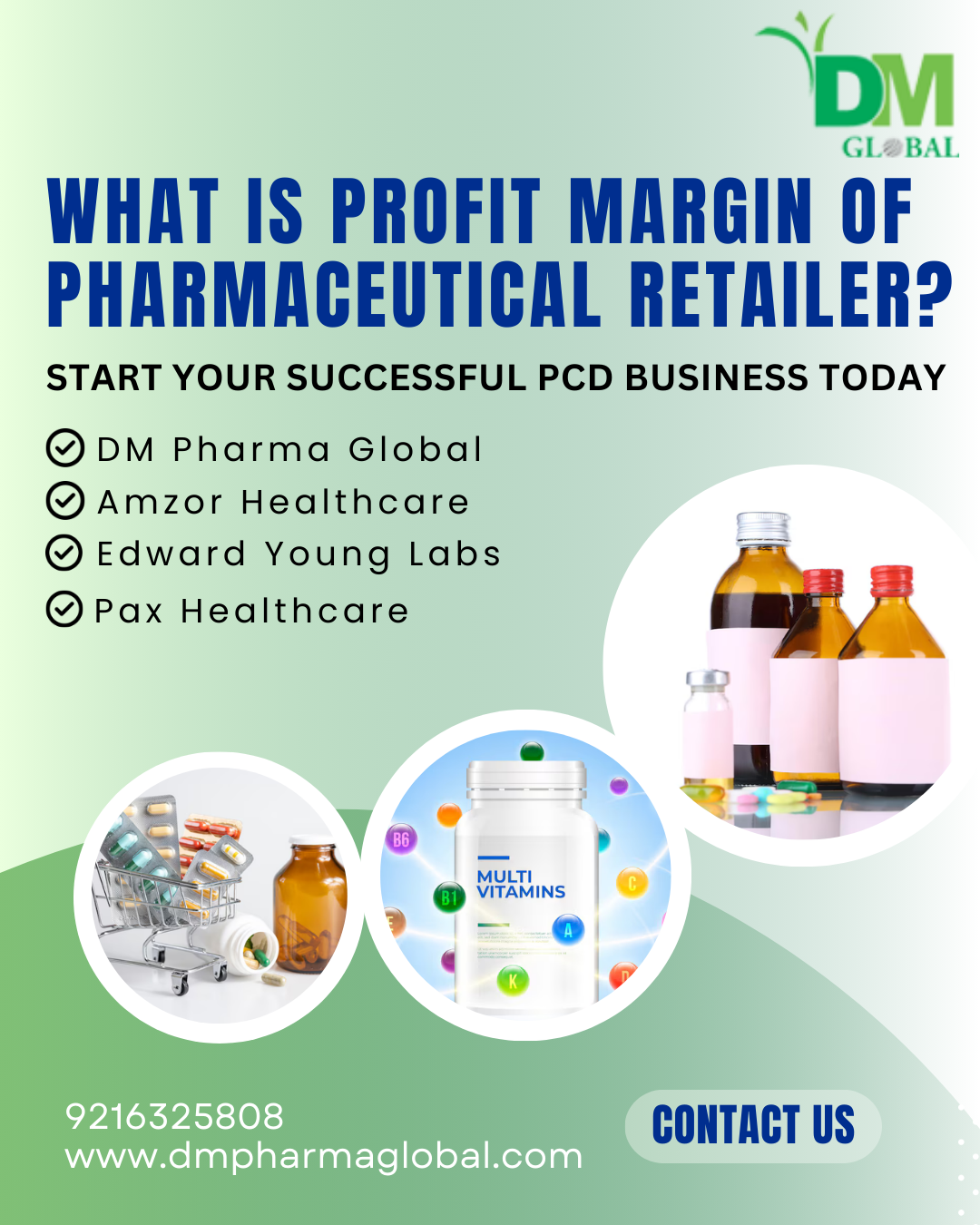When starting a career in pharmaceuticals, people may wonder one common question is: “What is the profit margin of pharmaceutical retailer (chemist and pharmacies)?”. Which is more effective for these medicines will depend on their type, marketing, brand reputation and changes in the market.
Retailers are important because they transfer pharmaceutical products from companies to the final buyers. Knowing how much money can be made in this industry helps new entrepreneurs plan better.
Profit Margin of Retailers in the Pharmaceutical Industry
The pharmaceutical retail industry in India operates through a multi-tier distribution system that includes C&F agents, stockists, distributors, and chemists. Retailers or chemists are at the end of this chain and usually enjoy higher profit margins due to direct selling to patients.
Profit margins vary across different types of drug marketing models:
1. Generic Medicine Marketing
In generic medicine marketing, chemists buy medicines in bulk at extremely low prices and sell them at market prices, resulting in margins of 30% to 50%. These drugs are not brand-specific, and the affordability factor allows retailers to attract more customers.
Retailers dealing in generic medicines must sell higher volumes to maximize earnings, as these drugs are not advertised and depend on customer trust.
2. Branded / Ethical / Prescription Drug Marketing
Retailers associated with branded or ethical medicines usually rely on doctor prescriptions. Having strong ties with local practitioners helps boost sales and profit margins.
-
Profit Margin: Typically 18% to 22%
-
PTR (Price to Retailer): Retailers get the medicines at a discounted price from distributors, enabling them to make margins when sold at MRP minus GST.
Retailers also benefit from additional incentives such as promotional offers and bonuses.
To explore examples of branded products in India, check out:
👉 Best Pantoprazole & Domperidone Medicines in India
3. Pharma Franchise Marketing
In this model, retailers act as franchise partners under a company’s name and brand. It’s quite similar to ethical marketing in terms of pricing and doctor-driven prescriptions.
-
Profit Margin: Between 18% and 22%, with added promotional benefits
-
Retailers get monopoly rights in their area and benefit from company branding, marketing material, and high-margin products.
If you’re planning to enter this space, consider partnering with a Top Pharma Franchise Company in India to get better margins and long-term growth.
For niche categories like PPIs (proton pump inhibitors), consider opportunities with a PPI Products Franchise Company.
4. Over the Counter (OTC) Medicine Marketing
OTC drugs are sold without a doctor’s prescription. This segment includes common medicines like cold & flu tablets, painkillers, and antacids. Since customers directly ask for these, the chemist has more control over pricing and brand recommendations.
-
Profit Margin: Usually 20% to 25%
-
Retailers may suggest premium brands for better profits
OTC marketing works well when paired with multivitamins and wellness products. For example:
👉 Top Multivitamins for Men in India
👉 Top 10 Multivitamin Supplements
Factors That Influence Retailer Profit Margins
Several factors can affect the profit margin of pharmaceutical retailers, including:
-
Product category (Generic, Branded, OTC)
-
Purchase volume and bulk discounts
-
Brand reputation and demand
-
Location and competition
-
Relationship with wholesalers/distributors
-
Government pricing regulations under DPCO (Drug Price Control Order)
Conclusion
Whether you’re exploring PPI products, branded medicines, or multivitamins, choose your segment wisely and partner with the right pharma company to ensure sustainable growth.
📞 Contact Us Today to Know More
📍 Website: www.dmpharmaglobal.com
📱 Call: +91-9216325808
🔍 Useful Resources:

